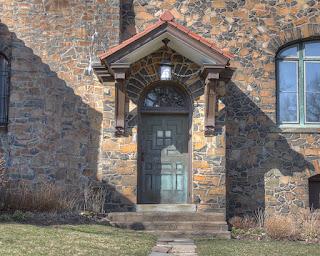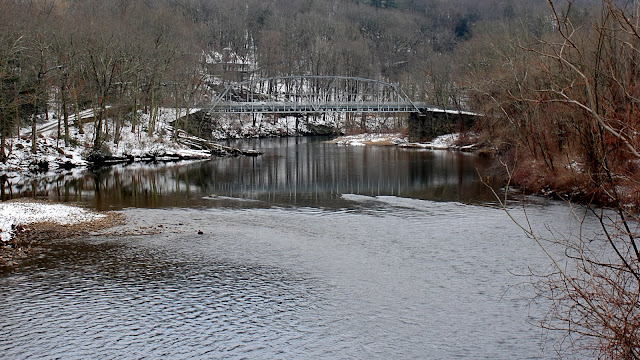 |
| Charter Oak Bridge |
It doesn't carry as much traffic as the Bulkeley Bridge, and it isn't the city centerpiece that Founders Bridge is, but the Charter Oak Bridge, the third (and newest) of Hartford's bridges across the Connecticut, has its own reasons to shine.
The Charter Oak that gave its name to the Hartford neighborhood where this bridge lands is a tree of legend in Connecticut. In 1662, the story goes, King James II decided that the colonies had had quite enough of this independence thing and appointed a governor, Edmund Andros, over the newly created Dominion of New England. When he arrived in Hartford to revoke Connecticut's charter, he was shown it, and then the candles blew out. When relit, the charter was gone -- hidden, it was said, in a huge oak tree, the Charter Oak, in south Hartford. In 1689, Andros was deposed and the Dominion of New England dissolved.
The original Charter Oak was split by lightning 150 years later, but its descendants live on, and the wood of the original tree was made into a chair which stands now in the State House.
Connecticut has always prided itself on its independence -- it was the first state to ratify the Constitution. The Charter Oak is Connecticut's symbol.
 |
| Charter Oak Bridge from the tour ship landing |
The East Hartford side of the bridge stands in a small park which is (unfortunately) rather marshy. The Hartford side ends in Charter Oak Landing, the main dock for boats both personal and commercial in Hartford. The Lady Katherine river tours leave from here. (The boat used to leave from Riverside Park near Founders Bridge, dunno why they moved down here). The public landing is on the south end of the park; the north end gives magnificent views of of the Colt Park section of Hartford (marked by the colorful dome on the old Colt Firearms factory) and of the Hartford skyline.
 |
| Charter Oak Landing |
This picture
may have been processed
a little bit. I was having some fun with the new version of Picasa. You can see the Colt factory dome on the left of the photo.
 |
| Obligatory car shot |
I don't honestly know how to get to the park in East Hartford. I've only been there on my bike, and I got there from the bridge itself, which features a wide, separated bike path on the north side. Charter Oak Bridge carries routes 5 and 15 over the river; following those signs will get you there. Or just click on the location information beneath this post and use Google Maps to get you there.
I've gotten to the end of this post without talking much about the bridge itself. You can see from the pictures that it's not all that special, a very modern girder bridge built with steel and concrete, similar to the East Windsor river crossing. It was built between 1988 and 1991 to replace an earlier bridge at the same point. Anyone going from I-84W to I-91S will cross the bridge and will never see the beautiful parks beneath it.




















